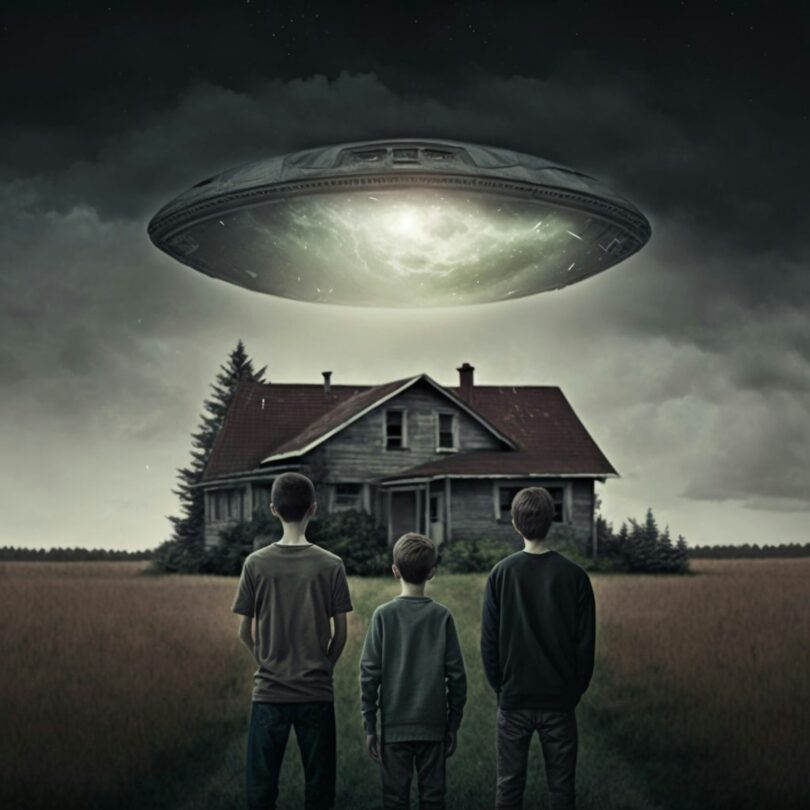Ancient Alien Theories: Myths or Misunderstood History?
Humanity’s past is filled with mysteries Alien Theories, from the construction of the pyramids to the inexplicable alignment of ancient structures with celestial bodies. For decades, some have proposed that extraterrestrial beings influenced early civilizations—a concept popularly known as Ancient Alien Theory. While mainstream scholars largely dismiss these claims as pseudoscience, others argue that there may be kernels of truth buried beneath layers of myth and legend. Are these theories mere modern myths, or are we misinterpreting history through a limited lens?
This article explores the origins, claims, criticisms, and implications of ancient alien theories to assess whether they are fantastical fiction or misunderstood aspects of human history.
The Origins of Ancient Alien Theories
Early Seeds of the Idea
The idea that intelligent beings from other worlds may have interacted with Earth is not entirely modern. Throughout history, various cultures have told stories of gods descending from the sky or of divine beings imparting wisdom to humans. However, the modern ancient astronaut hypothesis took root in the mid-20th century.
In 1968, Swiss author Erich von Däniken published Chariots of the Gods?, a book that questioned whether ancient myths and monumental architecture were evidence of extraterrestrial visitation. The book became an international bestseller and laid the foundation for what is now known as the ancient alien theory.
Key Influencers
-
Erich von Däniken: Popularized the theory in the West; his works suggest that extraterrestrials visited Earth in ancient times and influenced the development of technology and religion.
-
Zecharia Sitchin: Interpreted Sumerian texts to propose the existence of the Anunnaki, a race of aliens from a planet called Nibiru who allegedly created humans as slave laborers.
-
Giorgio A. Tsoukalos: Made the theory mainstream in pop culture through the History Channel’s series Ancient Aliens.
Common Claims and Evidence Cited by Proponents
1. Megalithic Structures
One of the primary arguments made by proponents of ancient alien theories is that ancient humans lacked the technological sophistication to build monumental structures such as:
-
The Great Pyramids of Giza (Egypt): Allegedly too precise and massive for primitive tools.
-
Stonehenge (UK): Its astronomical alignments and massive stones defy simple construction techniques.
-
Puma Punku (Bolivia): Intricate stonework that some claim could not have been achieved without advanced machinery.
Proponents argue that these marvels required either advanced knowledge or external assistance, possibly from alien beings.
2. Ancient Texts and Mythologies
Supporters point to ancient scriptures, myths, and carvings that describe or depict beings from the sky:
-
The Book of Ezekiel (Bible): Describes a vision of “wheels within wheels” and beings with “faces of a man, lion, ox, and eagle”—interpreted by some as a spacecraft.
-
The Vimana in Indian Texts: Described as flying chariots used by gods in Hindu epics, often depicted with technological sophistication.
-
Sumerian Tablets: Describe the Anunnaki, who allegedly “came from the heavens” and influenced human civilization.
3. Artifacts and Anomalies
Other evidence cited includes:
-
The Baghdad Battery: A clay jar from ancient Mesopotamia that some believe was a primitive galvanic cell.
-
Ancient figurines resembling modern-day astronauts or aircraft pilots.
-
Nazca Lines (Peru): Massive geoglyphs only fully visible from the air, prompting questions about their purpose and creators.
Criticism and Skepticism
Mainstream Academic Perspective
Most historians, archaeologists, and scientists dismiss ancient alien theories as pseudoscientific, citing several reasons:
-
Underestimation of Ancient Capabilities: Critics argue that proponents of these theories often discredit the ingenuity of ancient civilizations. Humans have demonstrated remarkable feats of engineering, creativity, and problem-solving for millennia.
-
Selective Interpretation: Ancient alien theorists often cherry-pick evidence and ignore contrary data or rational explanations.
-
Misinterpretation of Symbols and Art: Symbols that appear “alien” are often deeply rooted in the cultural and religious contexts of their time. For example, what appears as a “spacesuit” might be a depiction of ceremonial clothing or spiritual beings.
Debunking the Myths
-
The Pyramids: Archaeological evidence suggests the pyramids were built using ramp systems and labor forces, not extraterrestrial technology.
-
Stonehenge: Studies show it was constructed over centuries by people who had the knowledge and tools for the task.
-
Nazca Lines: These could have been created using simple tools and surveying methods. Recent research shows the lines were part of ceremonial and water rituals.
Why People Believe: Psychology and Sociology
The Allure of the Mysterious
Humans are naturally drawn to mystery and wonder. The idea that aliens influenced our ancestors plays into our fascination with the unknown and the extraordinary. These theories offer a cosmic significance to our past, suggesting we are part of a larger interstellar narrative.
Distrust in Institutions
Some believe in ancient alien theories because of a growing distrust in academic, religious, and governmental institutions. People may feel that mainstream narratives hide the “real truth,” making alternative theories more appealing.
Cultural Impact and Media
Pop culture plays a crucial role. Movies like Prometheus, Indiana Jones and the Kingdom of the Crystal Skull, and Stargate—along with TV shows like Ancient Aliens—have romanticized and legitimized these theories for millions of viewers worldwide.
Read More: 10 Mind-Blowing Facts That Will Shatter Your Perspective
The Blurred Lines Between Myth and History
Are Myths Literal Truths?
Ancient myths often contain symbolic language. Gods descending from the sky, battles in the heavens, and flying chariots can be metaphorical. Yet, some argue these are literal accounts of encounters with advanced beings misunderstood by early humans.
Religion and Ancient Aliens
Some theorists claim that religious experiences and divine revelations may have been interactions with extraterrestrials. For instance, the angelic beings in Christian and Islamic texts or the flying chariots in Hindu scriptures may not have been supernatural but extraterrestrial.
However, this interpretation can be seen as reductionist, oversimplifying deeply complex religious traditions and experiences.
Philosophical and Scientific Implications
If True, What Does It Mean?
If ancient alien theories were proven true, the implications would be revolutionary:
-
Redefinition of History: It would rewrite humanity’s origin story and challenge everything we know about our development.
-
Religious Upheaval: Many world religions might need to reconsider the source of their divine entities.
-
Scientific Paradigm Shift: Our understanding of biology, anthropology, and cosmology would be transformed.
Challenges to Scientific Validation
Despite the bold claims, the ancient alien theory faces a major hurdle: lack of verifiable physical evidence. Unlike mainstream science, which relies on reproducible and falsifiable evidence, many ancient alien claims are speculative and anecdotal.
Ancient Wisdom Misunderstood?
Advanced Knowledge without Aliens?
Many ancient texts and artifacts that seem inexplicable may reflect lost knowledge, not alien intervention. Civilizations like the Egyptians, Greeks, and Mayans were intellectually advanced, often combining science, astronomy, and spirituality.
-
The ancient Greeks had early analog computers like the Antikythera Mechanism.
-
The Mayans had complex calendars and astronomical observations rivaling modern precision.
-
Egyptians understood geometry and engineering at a high level.
Perhaps what we interpret as alien influence is simply a reflection of our ignorance of ancient knowledge systems.
Alternative Theories
Cataclysmic Civilization Theories
Some researchers, like Graham Hancock, suggest that a lost advanced human civilization—possibly destroyed by a cataclysm—passed on its knowledge to emerging societies. This explains sudden advancements in agriculture, astronomy, and construction without invoking aliens.
Panspermia
While not directly tied to ancient alien theories, panspermia suggests life on Earth may have originated from space via meteors or deliberate seeding. It adds another layer of complexity to the idea of cosmic involvement in humanity’s past.
Conclusion
Ancient alien theories sit at a fascinating crossroads between myth, history, science, and imagination. While much of the theory lacks rigorous evidence, it raises important questions about how we interpret our past. Were ancient people visited by extraterrestrials, or are we underestimating their capabilities? Do myths hide forgotten truths, or are they just poetic expressions of human experience?



